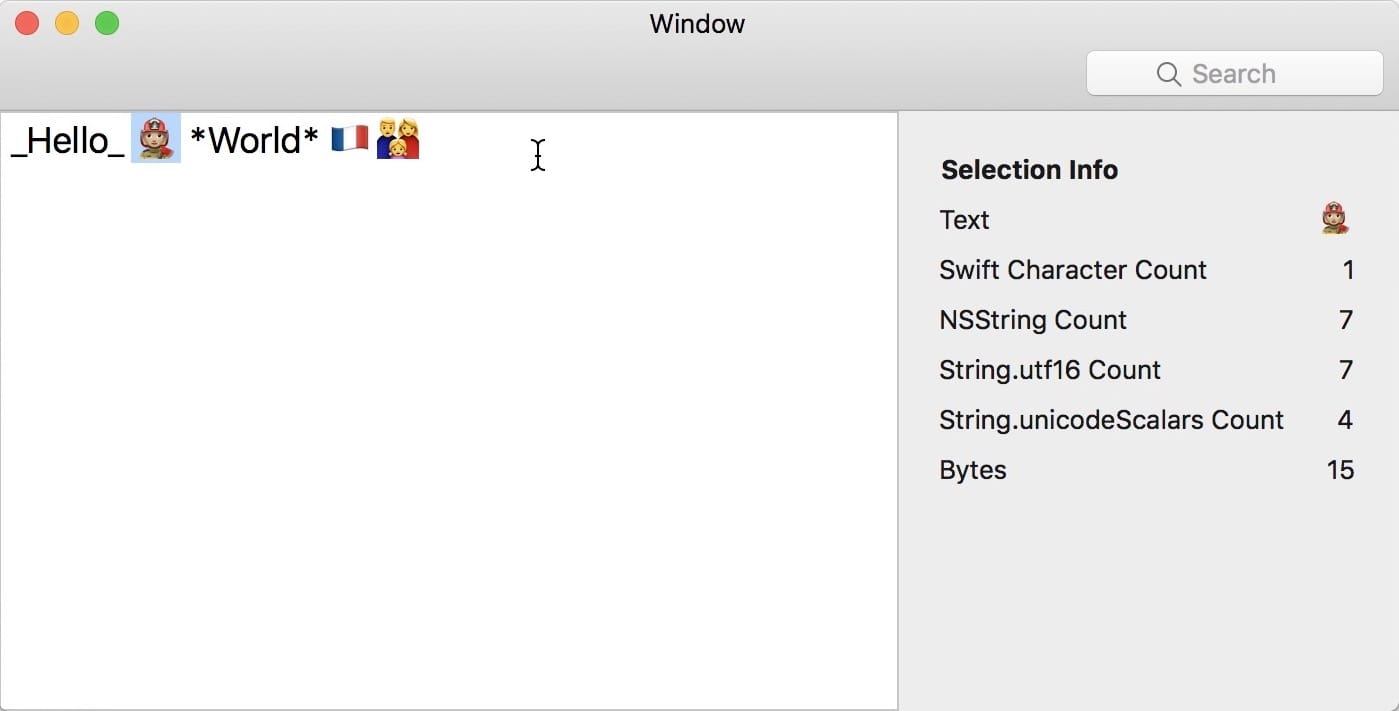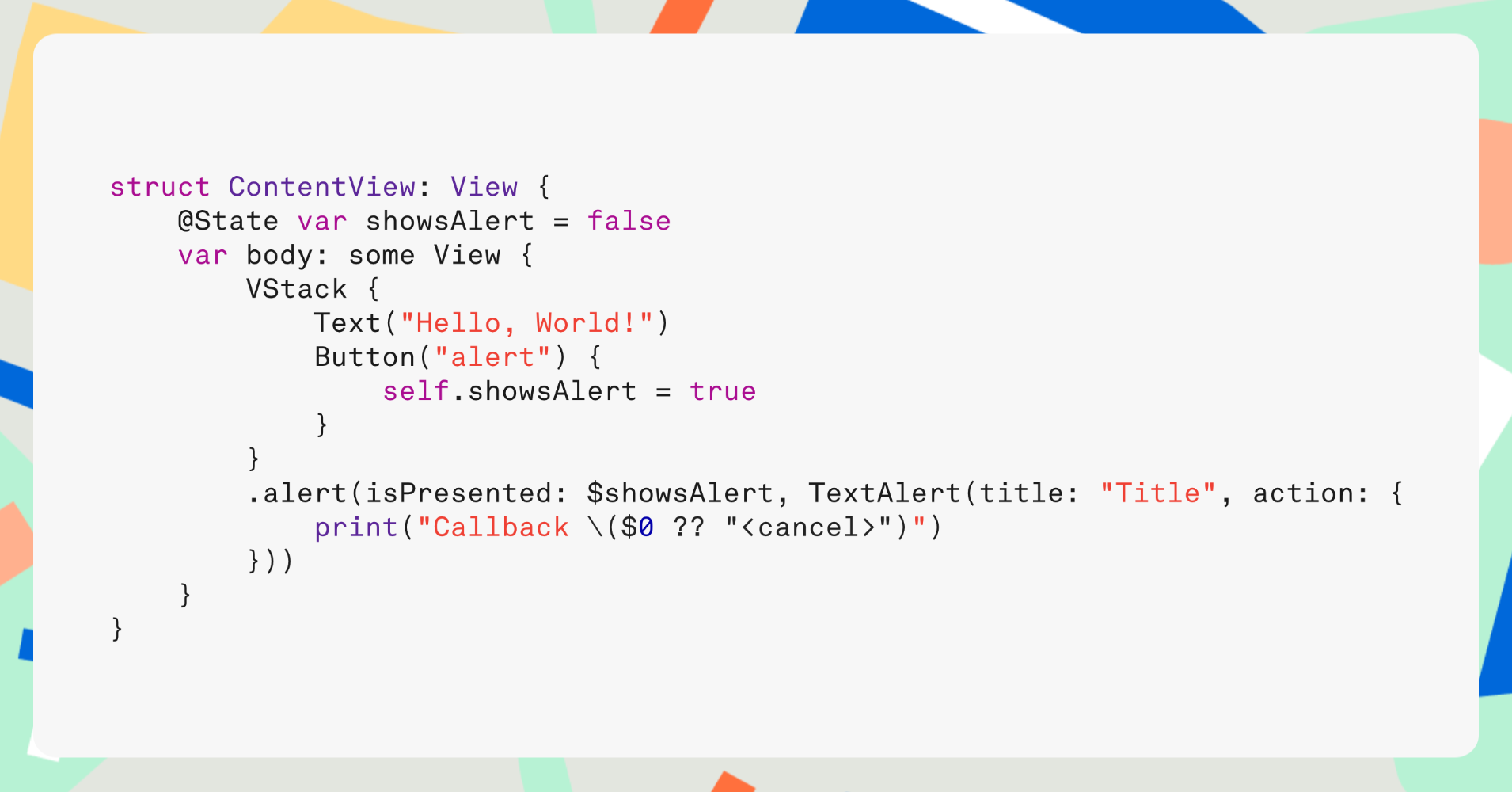

- Objc and swift share c string update#
- Objc and swift share c string software#
- Objc and swift share c string code#
We also worked on adding new app blocks and features and modifying the existing ones according to current users needs.
Objc and swift share c string update#
Our daily routine consisted of a number of problems, we needed to resolve regularly, such as news feed loading issues, duplicate content and weather report update fails. Redwerk provided longlasting maintenance for a majority of Worldnow’s iOS local news apps. It took us only three months to develop and launch a school observation app that will hopefully help The Education Partners maintain educational standards at the highest level. From the very beginning, performance was set as a key goal, for the app was supposed to handle massive amounts of media.

Thanks to our previous experience, Redwerk was able to deliver a simple and user-friendly prototype in almost no time and quickly pass on to implementing the app. The development of this app was ordered by The Education Partners as they needed to record their notes on teachers, students and the school itself fast and easy, both on- and offline. A perfect solution for school supervisors. A good place to start is Apple’s official (and quite thorough) documentation for the language.īeing founded back in 2005, Redwerk had enough time to practice in developing iOS games, applications, e-government and local media solutions, etc.Īmong the most challenging cases that helped us obtain and test out the experience in iOS development were the following: Give it a try yourself – you’re almost certain to agree. With its light, flexible syntax and numerous features to guard against common coding errors, Swift is simply a joy to program with. In Swift, protocols (or “Interfaces” in languages such as C#) can be implemented by not only classes, but also enums and structs as well furthermore, they provide an elegant and confusion-free alternative to multiple inheritance, as a single object can implement multiple protocols.
Objc and swift share c string software#
One of its most promising features is what Apple calls Protocol-Oriented Programming, a paradigm which may have a huge impact on software development in the future. We firmly believe Swift is the future of iOS development, and with its open source nature and growing popularity, we can expect to see it used on other platforms in the future. Observe:įor more info, please refer to the official Swift documentation for the do statement.

In C and Objective-C, we can already return nil from a function that would normally return an object, but we don’t have this option for functions which are expected to return a basic type such as int, float, or double.

in the event of invalid input) to return either a value encapsulated in an optional or nil. They allow functions which may not always be able to return a meaningful value (e.g. Optionals are a concept which doesn’t exist in C or Objective-C. It’s always a good idea to explore new languages and frameworks!)
Objc and swift share c string code#
(Feel free to use a playground to practice with the code snippets in this article. So here’s our top ten list of the biggest and most important differences between Swift and Objective-C! And we’re not the only ones: Swift has received glowing praise for its simplicity and flexibility, and its adoption rate has skyrocketed.Īfter developing a couple of iOS applications with Swift, we decided to share our thoughts about some of the things we think make it easier and more enjoyable to program with. It was a bold move to outright change the main development language for such a popular platform even so, our team responded to this news with huge enthusiasm and decided to switch to it in short order. On June 2nd, 2014, Apple unveiled a brand – new object-oriented programming language: Swift, a replacement for Objective-C, which had been up to that point the standard programming language for OS X and iOS application development.


 0 kommentar(er)
0 kommentar(er)
